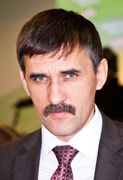  
| |||
|
| Current issue About edition Editorial board To authors Subscription Our authors Files |
|
February 2025, № 1 (245), pages 74-81doi: 10.25198/1814-6457-245-74Gerasimenko S.A., Pavlenko A.N. 1. Mosyagina N.G. and Shildyaeva L.V. (2009) Organization of the educational process, taking into account the increase in the independent work of students. Successes of modern natural science, №11, p. 98. 2. Petrovsky I.G. (2009) Lectures on the theory of ordinary differential equations: manual for universities. M.: Fizmatlit, 208 p. (Classics and modernity. Mathematics). ISBN 978-5-9221-1144-7. 3. Elsgoltz L.E. (2008) Differential Equations: Textbook. 7th ed. M.: LKI, 309 p. (Classic textbook of Moscow State University). Bibliography: p. 306. Prem. decree.: p. 307-309. ISBN 978-5-382-00638-3. 4. Pontryagin L.S. (1970) Ordinary differential equations: textbook for state universities. 3rd ed., Erased. M.: Nauka, 332 p.: Ill. Prem. decree.: p. 329-331. 5. Vilenkin N.Ya., Dobrokhotova M.A. and Safonov A.N. (1984) Differential equations: textbook. M.: Enlightenment, 176 p. 6. Fedoryuk M.V. (2003) Ordinary differential equations: textbook for universities. 3rd ed., Erased. St. Petersburg: Lan, 448 p. (Textbooks for universities. Special literature). Bibliography: p. 445-447. ISBN 5-8114-0491-3. 7. Popov V.S. and Nikolaev S.A. (1972) General electrical engineering with the basics of electronics. M.: Energy, 504 p. 8. Pisarevsky B.M. and Kharin V.T. (2004) Conversations about mathematics and mathematicians. M.: FIZMATLIT, 208 p. ISBN 5-9221-0418-7. 9. Amelkin V.V. (1987) Differential equations in applications. M.: Science. Main edition of physical and mathematical literature, 160 p. 10. Kiryanov D.V. (2012) Mathcad 15/Mathcad Prime 1.0. St. Petersburg: BHV-Petersburg, 432 p.: Ill. + Video course. ISBN 978-5-9775-0746-2. 11. Arnold V.I. (2011) Mathematical understanding of nature: essays on amazing physical phenomena and their understanding by mathematicians (with drawings by the author). 3rd ed., Stereotype. M.: ICNMO, 144 p. ISBN 978-5-94057-744-7. 12. Andreev V.S. (1982) Theory of nonlinear electrical circuits: textbook for universities. M.: Radio and communications, 280 p., Ill. 13. Gerasimenko S.A., A.N. Pavlenko and O.A. Pikhtilkova (2017) On some aspects of organizing independent work in the disciplines of the mathematical cycle of students of natural sciences. Vestnik of Orenburg State University, № 8 (208), pp. 3-8. 14. Kruchinin V.V. (2004) The use of trees and/or to generate questions and tasks. Bulletin of Tomsk State University, 2004, №284, pp. 183-186. 15. Laptev V.V. and Tolasova V.V. (2010) Generation of task options for laboratory programming. Bulletin of Astrakhan State Technical University. Series: Management, Computing and Computer Science, № 1, pp. 127-131. 16. Zorin Yu.A. (2013) The use of combinatorial generation algorithms in the construction of test task generators. Distance and virtual learning, №6, pp. 54-59. About this articleAuthors: Gerasimenko S.A., Pavlenko A.N.Year: 2025 doi: 10.25198/1814-6457-245-74 |
|
||||||||||||
| Current issue About edition Editorial board To authors Subscription Our authors Files |
|
© Электронное периодическое издание: ВЕСТНИК ОГУ on-line (VESTNIK OSU on-line), ISSN on-line 1814-6465 Зарегистрировано в Федеральной службе по надзору в сфере связи, информационных технологий и массовых коммуникаций Свидетельство о регистрации СМИ: Эл № ФС77-37678 от 29 сентября 2009 г. Учредитель: Оренбургский государственный университет (ОГУ) Главный редактор: С.А. Мирошников Адрес редакции: 460018, г. Оренбург, проспект Победы, д. 13, к. 2335 Тел./факс: (3532)37-27-78 E-mail: vestnik@mail.osu.ru |
1999–2025 © CIT OSU |















